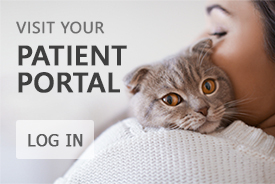Dog Anxiety
 Don’t fret, Fido. I’ll be right back! Learn how to tell if your dog is suffering from “canine separation anxiety,” and how to help it relax.
Don’t fret, Fido. I’ll be right back! Learn how to tell if your dog is suffering from “canine separation anxiety,” and how to help it relax.
While dogs may be known more for their playful side, some dogs can become very anxious at times. Unfortunately, separation anxiety is becoming one of the most common behavior issues seen by dog trainers today. I have experienced this firsthand with my dog, Thor. Thor is so attached to my mom that she becomes very distressed when she can’t run errands with her.
Dogs (and other pets) can sense your “exit cues,” the things you do when you’re getting ready to leave the house. These cues include grabbing the keys, a purse, or anything else you normally take with you on an excursion. If your pet is suffering from separation anxiety, he might start whining, pacing, and barking when you appear to be leaving your home.
Other symptoms that indicate separation anxiety take place after you have left your home. These symptoms, or behaviors, include:
- Causing some destruction, particularly scratch or bite marks on furniture or wood.
- Using the bathroom inside. This is what Thor does whenever my mom has to leave her at home.
- Yowling or barking, even after you have left the home.
- Ripping up or peeing on personal items such as bedding, shoes, or anything with your scent on it.
While it may be hard to not be annoyed with these behaviors, you should try your best to not punish your pet. Instead, animal behaviorists recommend the following steps. The overall goal is to make your comings and goings out of the house no big deal, and to let your pet know that you will return after you have left.
- To start, simply collect the things you’d normally take when you leave, such as purse, keys, coat, etc…, but don’t leave the house. Let your pet get used to this new situation. You may want to repeat these actions a few times, until your pet becomes more relaxed.
- Next, collect your things and leave your home for just a short period of time—maybe just go out to the yard. Over time, progress to staying out for longer amounts. Eventually, your pet should become more comfortable with you leaving.
If this doesn’t seem to help your dog, you may want to consult with your veterinarian on other things to try. No one likes a stressed out pooch!
Do you have any experience with separation anxiety in dogs? How did you deal with it? Tell us in the comments!
The post Dog Anxiety appeared first on Pet Assure Blog.
 Posted by dvmgalaxy
Posted by dvmgalaxy- Posted in Uncategorized
 May, 13, 2019
May, 13, 2019 Comments Off on Dog Anxiety
Comments Off on Dog Anxiety

 (770) 545-8077 | Fax: (770) 450-8573
(770) 545-8077 | Fax: (770) 450-8573


